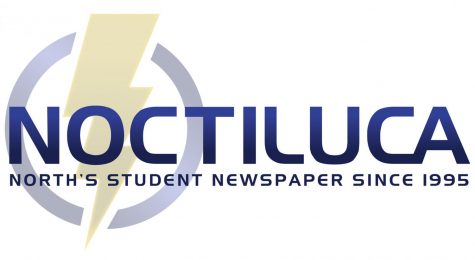Does the 2016 election require the attention of the American population?
The opposition and polarity of the two parties has dramatically increased (as of 2014) as Republican dislike of Democrats rose from 17% to 43% while Democrat dislike for Republicans rose from 16% to 38%.
October 26, 2016
Insults are flying. Accusations are hurled with little to no basis in fact. Social media is the center stage for drama and action. The current election feels more like an episode of “Keeping up with the Kardashians” rather than an election to decide who will lead one of the most powerful nations in the world. Some have argued that this election will change the course of America forever, while others say this election is a change that has been in the making for years.
One of the major changes that could come out of this election cycle is a political realignment. Joel Hermansen, who teaches AP Comparative Government and Politics at North, defines political realignment as “a phenomenon by which the political behavior of Americans causes them to switch party lines.” Political realignments can consist of one of two things: a dramatic change in the beliefs or the constituents of a party.
These realignments have happened regularly throughout history, usually following major events. A more recent realignment was in 1932 when the Democratic Party first came to power. Hermansen says this realignment was the result of the Great Depression and “the activism of the federal government in trying to solve those problems.”
This election won’t be the end of the Democrats or Republicans, but rather a change in who will be supporting them. Emma Knutson, copresident for the Democratic League at Appleton North High School, believes that we “may have two parties with their respective names, but I don’t think that they will stand for the same platform or characteristics that we’re seeing today.”
In their long histories, our two parties have already switched their voter base. The Republican Party was founded as an abolitionist party based in the north. The Democratic Party that FDR created had a strong base among working-class whites who had lost their jobs in the Depression. Writing for Politico, Michael Lind stated that “today’s Republican Party is predominantly a Midwestern, white, working-class party with its geographic epicenter in the South and interior West. Today’s Democratic Party is a coalition of relatively upscale whites with racial and ethnic minorities, concentrated in an archipelago of densely populated blue cities.”
The other factor in political realignment is a change in views. Our political system has been polarizing for some time, as reported by Pew Research Center in 2012. The median Democrat and Republican have been shifting farther and farther from centrist views for the last few years. In fact, the percentage of Americans who consistently identified as liberal or conservative has nearly doubled over the last two decades.
The catalyst for this recent change in party views may have been Bernie Sanders, the far-left presidential hopeful who dominated amongst millennials in the primaries. Sanders’ views may have influenced those of Democratic presidential nominee, Hillary Clinton. In order to gain Sanders’ share of millennials, she may have shifted her policies to match some of Sanders’ more popular points and “diminished her ability to run a more mainstream campaign,” according to Hermansen. Knutson also sees Republican candidate Trump as a similar influence within the Republican party. “Both of these figures represent groups that felt overwhelmingly left out from the political process, which is why they evoked such a large reaction from the American people,” she says.
However, the result of having two very different parties is animosity. Pew Research Center also reported higher levels of Americans with “very unfavorable opinions” of the other party. In the case of Republicans, dislike of Democrats jumped from 17 percent to 43 percent, while Democrats rose from 16 percent to 38 percent. This difference will lead to two things post-election: a difficulty in passing legislation in Congress and a president the people may not support. Knutson says within Congress this animosity has led to a “reds versus blues” mentality “which accomplishes near to nothing in the large scheme of things.” In regards to the president, Hermansen says “a president draws their legitimacy from the outcome, and the outcome we will have may be so narrow that it will be difficult for them to find the legitimacy to push forward a platform.”
As Nov. 8 approaches, political debate is sure to start in the halls of North. It is easy to get involved through the Democratic League and Republican Club at school. The Democratic League will be assisting with voter registration with the League of Women Voters, and the Republican Club will be working on campaigning with local elections. For more information on the Democratic League, contact Ms. Nider and for the Republican Club, Ms. Platten.


